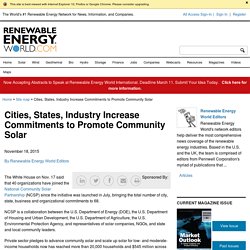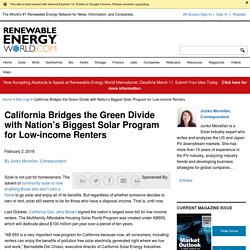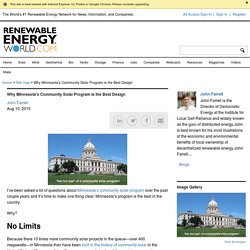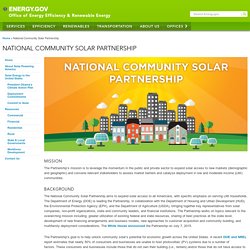

World's Tallest Solar Tower to Supply 120,000 Homes With Renewable Energy. Israel’s 787-foot concentrated solar power tower—which will be the world’s tallest such tower once construction is complete—will bring up to 121 megawatts of renewable power to the country.

Megalim Solar Power—a joint venture between Oakland, California’s Brightsource and French engineering firm Alstom—is the company behind the $773 million project along with shareholders such as General Electric. Israel’s new solar tower will stand at the center of a 3.15 square kilometer field covered by more than 50,000 sun-tracking heliostats (mirrors) Brightsource said in a press release. The cumulative surface area of the complex covers more than 1 million square meters. The mirrors track the sun while concentrating sunlight onto a boiler atop the tower which will produce high temperatures at high pressures to feed a steam turbine to generate electricity. The tower will supply 1 percent of Israel’s electricity under an agreement with the Israeli government, Reuters reported.
Cities, States, Industry Increase Commitments to Promote Community Solar - Renewable Energy World. The White House on Nov. 17 said that 40 organizations have joined the National Community Solar Partnership (NCSP) since the initiative was launched in July, bringing the total number of city, state, business and organizational commitments to 68.

NCSP is a collaboration between the U.S. Department of Energy (DOE), the U.S. Department of Housing and Urban Development, the U.S. Department of Agriculture, the U.S. Environmental Protection Agency, and representatives of solar companies, NGOs, and state and local community leaders. Private sector pledges to advance community solar and scale up solar for low- and moderate-income households now has reached more than 20,000 households and $545 million across 21 states, the White House said. Community solar programs allow a group of people to purchase a stake in a solar facility in order to obtain the energy benefits of the facility in their utility bills. Among the funding recipients are SunPower Corp. and Sunrun Inc. California Bridges the Green Divide with Nation’s Biggest Solar Program for Low-income Renters - Renewable Energy World. Solar is not just for homeowners.

The advent of community solar is now enabling those who don’t own a home to go solar and enjoy all of its benefits. But regardless of whether someone decides to own or rent, solar still seems to be for those who have a disposal income. That is, until now. Last October, California Gov. Jerry Brown signed the nation’s largest solar bill for low-income renters. “AB 693 is a very important new program for California because now, all consumers, including renters can enjoy the benefits of pollution free solar electricity generated right where we live and work,” Bernadette Del Chiaro, executive director of California Solar Energy Industries Association (CALSEIA), said. 464 kW PV system on “Park Villas” Multifamily Affordable housing with 268 tenants. The new program has the goal to install at least 300 MW of rooftop solar PV on multifamily affordable housing projects. “[The] minimum [is] 300 MW,” Scott Sarem, CEO and Co-founder of Everyday Energy, said.
First Solar Smart Grid in Alata. Community Solar Program. I’ve been asked a lot of questions about Minnesota’s community solar program over the past couple years and it’s time to make one thing clear: Minnesota’s program is the best in the country.

Why? National Community Solar Partnership. Mission The Partnership’s mission is to leverage the momentum in the public and private sector to expand solar access to new markets (demographic and geographic) and convene relevant stakeholders to assess market barriers and catalyze deployment in low and moderate income (LMI) communities.

Background The National Community Solar Partnership aims to expand solar access to all Americans, with specific emphasis on serving LMI households. The Department of Energy (DOE) is leading the Partnership, in collaboration with the Department of Housing and Urban Development (HUD), the Environmental Protection Agency (EPA), and the Department of Agriculture (USDA), bringing together key representatives from solar companies, non-profit organizations, state and community leaders, and financial institutions.
National Community Solar Partnership. 54570. Once cutting edge, solar power becoming as commonplace as commuting. Five solar projects sprouting along the Massachusetts Turnpike and Route 3 are not the largest in the state, but they are among the most visible and striking examples of a solar industry that has grown more rapidly than most policy makers and energy specialists ever imagined.

As tens of thousands of commuters whiz by, the gleaming rows of solar panels in locations like the Interstate 90 service plaza in Framingham, an embankment on the turnpike near Natick, or a rest area on Route 3 in Plymouth show how solar power has been integrated into daily life. The Framingham and Natick projects are already generating power; when the other sites in Framingham and Plymouth become operational later this month, the five solar farms will produce a combined 2,500 kilowatts of electricity, enough to power about 500 homes. Advertisement Joanne Rathe/Globe Staff Officials from Ameresco Inc. inspected the site. National Community Solar Partnership. Homepage - Ormash Solar Energy.